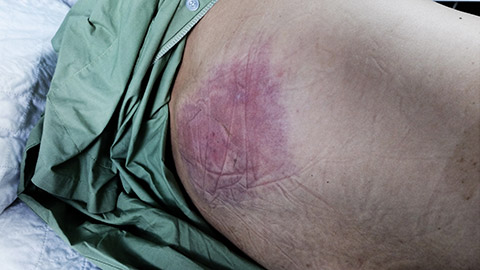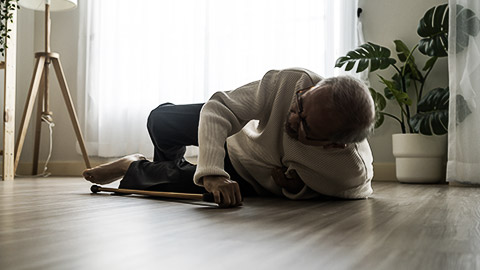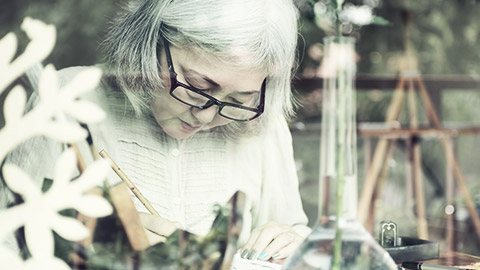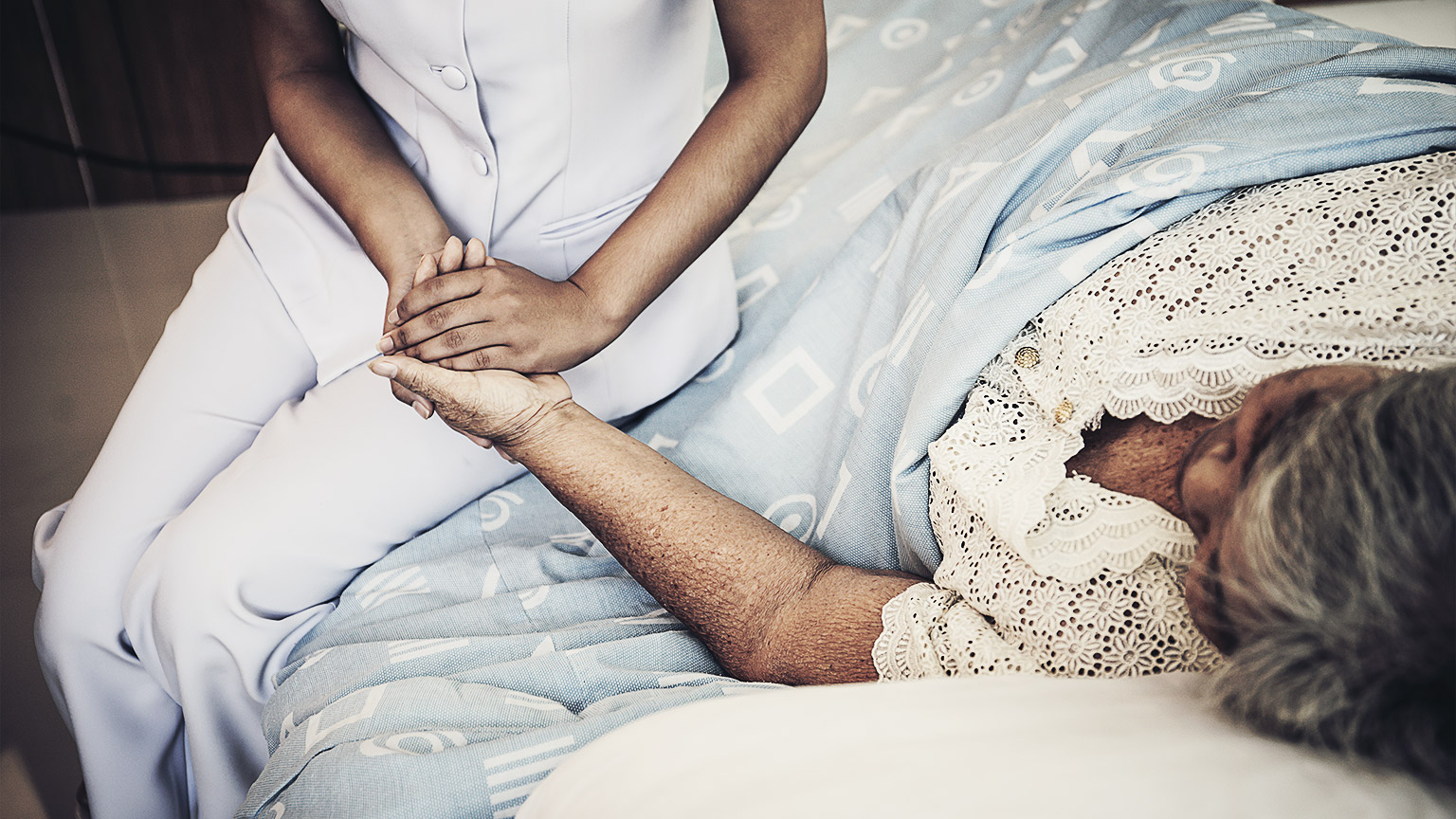As a support worker it is important to be aware of the various duties you will do in terms of monitoring support activities.
When supporting a person in the aged care or disability sector, monitoring the clients services is a crucial aspect. For example:
- If you have injury concerns, call an ambulance if you are in the community, or call a supervisor if you are in a facility.
- Help them to help themselves up. Ask if they can roll over onto their front and crawl up towards a chair or other raised surface. If the person is not able to do this, use a hoist or wait until help arrives.
- If you need to wait for help. Keep the person comfortable and warm. Stay with them and reassure them until help arrives.
- Report and document the fall. Let your supervisor know what has happened and record the incident according to your service reporting documents.
- It may be best to use a hoist to assist the fallen person. A risk assessment should be done as quickly as possible before moving the person.
Moving a fallen client in a restricted space using slide sheets
If a client has fallen in an area where a hoist cannot be used (for example, between a toilet and a wall), the preferred option is to slide them to an area where you can use a hoist. For this technique, you need at least two carers and two slide sheets. Sole carers working in the community may need to call an ambulance.
- Assess environment and safety for you, then the client
- If the client cannot get up, use two slide sheets, positioned under knees or in small of back depending on how they have fallen. Or you can roll them in the usual way – ensure the slide sheets are under the hips, but do not worry if you cannot get under their shoulders as well
- With two carers on their hands and knees, or with one knee up, move the client onto the top sheet by sitting back onto your heels. Keep your arms straight and use the momentum of sitting back onto your heels to move the client – it usually takes a few small manoeuvres to straighten the client if they need to come through a doorway Move the client far enough out so they are in a space large enough to be hoisted
- Where possible, a third person should look after the client’s head – the two carers moving the client must work at the speed with which this third carer can safely move
- Be aware that the client’s elbows and feet are at risk of being knocked during this procedure
- When the client is stable, hoist them to a bed or trolley.
Watch
The following video provides further information of different techniques using slide sheets.
Using slide sheets: Aidacare
Examples of risks may include:
A client who asks you to remove the lid from their medication so they can take an overdose may be angry at your refusal but the legal consequences to you of performing the task requested would be severe. You would have clearly breached your duty of care as a reasonable person in your situation would have refused to assist a client to self-harm. If a client refuses to eat meals or take their medication, this should be reported to your supervisor for immediate attention. You cannot force a client to do either task because to do so is assault and criminal charges can be laid against you. A client who regularly refuses to wash may be at risk of infection and loss of skin integrity and they are therefore placing themselves at risk. This situation needs to be documented and reported.
A client who asks you to remove the lid from their medication so they can take an overdose may be angry at your refusal but the legal consequences to you of performing the task requested would be severe. You would have clearly breached your duty of care as a reasonable person in your situation would have refused to assist a client to self-harm. If a client refuses to eat meals or take their medication, this should be reported to your supervisor for immediate attention. You cannot force a client to do either task because to do so is assault and criminal charges can be laid against you. A client who regularly refuses to wash may be at risk of infection and loss of skin integrity and they are therefore placing themselves at risk. This situation needs to be documented and reported. Keep items like drinks and walking aids within reach of the person when you are leaving them alone, so that they can help themselves walk or reach items without the need to call you. If the person uses a call bell, keep it attached to the person’s bed or chair, so that they can call you easily if they need help. Leave lights on where the person might need extra help to see better.
If you see safety hazards, consider how they will be fixed or kept safe before they are fixed. Depending on the type of setting you work in, this might require you to:
- Fix the problem straight away if possible and if it is safe for you to do so, such as moving clutter out of the walkaway
- Complete an incident report or monitoring form so that the problem can be referred to a maintenance person
- Take the unsafe item away so that it cannot be used, such as removing a faulty hoist from the floor and putting a “faulty” sign on it
- Put signs or barriers around the unsafe area while it is waiting to be fixed, such as a “wet floor” sign where there has been a spill that is being cleaned up. If you do this, consider whether the client might understand what the sign means or whether this will need to be communicated to them
- Ask your supervisor to refer the equipment to a maintenance service, such as a handyman, plumber or electrician
Pressure area management

Pressure area management refers to the prevention and treatment of pressure injuries, also known as bedsores or decubitus ulcers. These injuries occur when sustained pressure on a specific area of the body disrupts the blood flow to the skin and underlying tissue, leading to damage and potentially infection.
Pressure injuries are a common problem among older adults, particularly those who are bedridden or have limited mobility. Risk factors include older age, poor nutrition, incontinence, and certain medical conditions such as diabetes and peripheral vascular disease.
Effective pressure area management involves a combination of preventive and treatment measures.
Preventive measures include:
- Regularly turning and repositioning the person, ideally every 2 hours
- Using pressure-relieving devices such as alternating pressure mattresses and cushions
- Keeping the skin clean and dry
- Providing good nutrition and hydration
- Encouraging and assisting with mobility as much as possible
- Monitoring for early signs of pressure injury such as redness, warmth, or discomfort in a specific area
Treatment measures include:
- Cleaning and dressing the wound
- Administering medication as needed to manage pain and prevent infection
- Monitoring the wound to check for signs of improvement or deterioration
- Using specialised dressings and equipment as needed
- Providing proper nutrition and hydration
Under the Workplace Health and Safety Act, employers are obliged to provide a safe workplace and employees are obligated to follow safe work practices.
Visual Impairment at Night
Many falls happen on the way to the toilet, especially at night. When you are preparing the person’s room for the night:
- Consider leaving the toilet or hallway light on
- Ask the person’s family to supply motion sensitive night lights that can be plugged into power points
- Leave the person’s walking aid and slippers near their bed
Signs and pictures on the wall can help people with dementia to navigate around their home or around a facility more easily. Arrows can point them towards the toilet. A picture of a toilet on the bathroom door can help the person identify the bathroom quickly and easily. A glow in the dark sticker on the bathroom door can also help. These are inexpensive and easy for a family member or the client to apply.
Falls Recovery

When falls happen, they can be distressing to the person and those around them. However, there are a few things that are important to remember when you are supporting older people and people with disabilities who might be prone to falling.
Falling is sometimes a risk that must be accepted, as the cost of allowing independence and minimising the use of restraints. If a person falls simply because they were practising independence and freedom, you have not done anything wrong.
You must never try to stop a person from falling by pulling them out of a fall, or by trying to get in the way of the person to stop them from falling. This can put you at a much bigger risk than the risk to the person.
If a person has fallen:
- Check if they are bleeding or injured. If you have injury concerns, call an ambulance if you are in the community, or call a supervisor if you are in a facility.
- Help them to help themselves up. Ask if they can roll over onto their front and crawl up towards a chair or other raised surface. If the person is not able to do this, use a hoist or wait until help arrives.
- If you need to wait for help. Keep the person comfortable and warm. Stay with them and reassure them until help arrives.
- Report and document the fall. Let your supervisor know what has happened and record the incident according to your service reporting documents.
It may be best to use a hoist to assist the fallen person. A risk assessment should be done as quickly as possible before moving the person.
Moving a fallen client in a restricted space using slide sheets
If a client has fallen in an area where a hoist cannot be used (for example, between a toilet and a wall), the preferred option is to slide them to an area where you can use a hoist. For this technique, you need at least two carers and two slide sheets. Sole carers working in the community may need to call an ambulance.
- Assess environment and safety for you, then the client
- If the client cannot get up, use two slide sheets, positioned under knees or in small of back depending on how they have fallen. Or you can roll them in the usual way – ensure the slide sheets are under the hips, but do not worry if you cannot get under their shoulders as well
- With two carers on their hands and knees, or with one knee up, move the client onto the top sheet by sitting back onto your heels. Keep your arms straight and use the momentum of sitting back onto your heels to move the client – it usually takes a few small manoeuvres to straighten the client if they need to come through a doorway
- Move the client far enough out so they are in a space large enough to be hoisted
- Where possible, a third person should look after the client’s head – the two carers moving the client must work at the speed with which this third carer can safely move
- Be aware that the client’s elbows and feet are at risk of being knocked during this procedure
- When the client is stable, hoist them to a bed or trolley
Monitoring is an ongoing process of checking and assessing how something is working. Monitoring the plan helps you to understand how well the plan is working for the person, and whether it needs to be changed or updated. It is also important to monitor your own work, to ensure that you are meeting the person’s needs. Monitoring you own work can help you to be the best you can be at your job. It requires you to be honest with yourself, open to change and criticism, and ready to find and listen to new ways of doing things. It is tempting to ask for or expect only positive feedback as a way to improve your confidence. However, there is a lot to be learnt from asking for honest feedback and being non-defensive when it is given. This is a skill that can be difficult to learn, but that can ultimately have a positive effect on your work practice.
Some ways that you can monitor how you are doing include:
| Actions | Descriptions |
|---|---|
| Asking your manager what you can do better | Make a habit of asking the client questions about how you are doing. Try to ask the question in a way that is not simply seeking approval. For example, instead of ‘Did you like the way I looked after you today’, ask ‘What do you think I could do better?’ This type of question is more likely to lead to an honest response and sharing of ideas. |
| Ask the client how well you are meeting their needs | Make a habit of asking the client questions about how you are doing. Try to ask the question in a way that is not simply seeking approval. For example, instead of ‘Did you like the way I looked after you today’, ask ‘What do you think I could do better?’ This type of question is more likely to lead to an honest response and sharing of ideas. |
| Reflecting on your work practice | Try to follow media reports of major issues that affect your industry, so that you can not only be aware of these issues, but can start to work in ways that respect the issues and problems faced by vulnerable people. Subscribe to industry journals and to regular emails from authorities such as Dementia Australia. |
| Know and follow industry standards | Keep a journal or try to question yourself regularly about the quality of your work. Questions might include: What did I do well today? What could I have done better? If something went wrong, what can I do to prevent it happening again? |
| Read and listen widely about new ways of doing things | The Aged Care Quality Standards and the National Standards for Disability Services are developed for workers like you, as well as for your managers. They can help you understand what is expected of you, and how you can meet or exceed the requirements of the industry. |
Example
The Aged Care Royal Commission identified alarming evidence of widespread abuse and neglect in aged care. The Commission inquiry and its findings were widely discussed in the media, and a lot could be learnt by listening to these reports. The inquiry has brought about significant changes to the way that abuse and neglect are identified, reported and managed. You could follow the important impacts of the Royal Commission by listening to media reports on television and radio; or by subscribing to updates from key Government websites.
The aged and disability industry standards both require you to involve the client or resident in regular discussions about how the support services are meeting their needs. This can be done in both formal and informal ways.
For example, by collecting client feedback. It should be part of your everyday process to stop regularly and ask each client or resident whether they are comfortable and happy with the support they are being given. At the end of a personal care routine (such as a shower) you might ask them whether they need anything further and if they felt happy with the process you have just followed. This is called informal feedback, and it is an important way to make sure that any needs that have been missed are quickly supported. Informal feedback can also help you to gauge the person’s ongoing satisfaction.
There are many other ways to gather feedback from clients or residents, apart from asking them. Here are some examples:
| Process | Action |
|---|---|
| Complaint process |
|
| Meetings |
|
| Formal Feedback |
|
| Observations |
|
Support Plan Reviews
The client or resident must always be included when changes are being made to their plan. They must agree to and understand the nature of these changes. A formal review should take place at least every six months or when the person’s needs, goals, preferences or circumstances change. The review of the plan is a collaboration with the client, their family, support workers and other professionals.
Reviews can be completed in a group meeting, a series of smaller meetings, or by phone. When something in the plan has not been working, it is your role to discuss this to you supervisor. These reports can be brought to the review meetings, to help with the revisions to the plan. In a review meeting, the client and their representatives are given the opportunity to discuss which goals have been met, and which goals and supports need to be changed.

Case Study
Mrs Zhao
Read the Case study and answer the questions that follow. Mrs Zhao is aged 84. She lives at Sunnyvale Residential Aged Care where she has her own single room and ensuite bathroom. She uses an upholstered armchair from her home and has several small cupboards to store her collection of books and ornaments. She also has her own feather duvet on her bed and several crocheted rugs.
Mrs Zhao receives physical assistance with dressing and showering. She wears continence pads. She was able to look after this need herself until recently, but lately has begun to forget to change them and needs reminders. They are sometimes found in her other belongings, even though they are wet and soiled. She walks with a walking frame and sometimes loses her balance. She has lost some of her eyesight and wears hearing aids in both ears. Last week, she fell in her bathroom and it was some time before a support worker found her as she could not reach the call button. She was bruised and shaken but not seriously injured. The bathroom is quite small and the support worker struggled to help her up from the floor due to the confined space.
Mrs Zhao has type 2 diabetes, and this is managed with insulin injections and diet. She is encouraged to take a daily walk in the garden and to participate in chair yoga group sessions, carpet bowls and other physical activities within the residence. Mrs Zhao has a sweet tooth and enjoys cakes, biscuits and desserts, which other residents sometimes give her and which family members bring in. She is in the early stages of dementia and often does not remember why she is not supposed to eat sweets. Sometimes she becomes very angry, and verbally and occasionally physically aggressive towards staff members.
Family members used to visit regularly but due to restrictions following the COVID-19 pandemic they have not been able to visit for several months; they Skype instead, and Mrs Zhao is learning to use this technology. Aged care residential services are now able to permit visits from one family member at a time, and Mrs Zhao is looking forward to a visit from her daughter Sally, who works as a nurse in the local hospital emergency department. 1. What changes have happened that might need to be included in a support plan review? 2. What unmet needs might Mrs Zhao currently have? 3. Sally wishes to make a complaint about the fall that her mother had and the length of time it took for her to be found. What would you say to Sally about this? 4. How could you collect feedback from Mrs Zhao about how she feels about her care and support? 5. How could you collect feedback from Sally?
Self-determination refers to a person’s ability to make their own choices and manage their life. It provides greater control instead of feeling controlled by others. It helps to keep people motivated, to change and grow naturally and it has a significantly positive role in a person’s wellbeing. Self-Determination Theory (SDT) represents a broad framework of the study of human personality and motivation. According to SDT, people need to achieve the following psychological growth:
Autonomy People need to feel and be in control of their own behaviours and goals. The sense of being able to take action results in real change and is a huge part where we feel self-determination.
Competency People need to learn different skills and be confident with the. When people feel they have the skills then they are more likely to take action to help achieve their goals.
Connection or relatedness People need to feel a sense of belonging to others.
Self determined behaviours can include:
- Driving by enjoyment
- for instance: choosing to do something you enjoy for the sake of your enjoyment positively impacts your mental health.
- Motivation by a reward
- for instance: If you learn new skills and a reward is provided at the end of your learning.
- Feeling in control
- for instance: when you know a mistake was made and you take action to fix the mistake.
Non-self determined behaviours can include:
- Lack of motivation
- A belief that no matter what they do, it will not make an impact or have an effect
- Feel helpless to control the situation
- Driving by obligation and responsibility – for instance, working in a job because you have to , not because you want to.
Participating in discussions to support self-determination
As a support worker you will need to meet with your supervisor and client to support their self-determination.
- What could this look like? Firstly, consider how you empower clients?
- Do you provide them with written or verbal information? Do you involve them when choosing treatments or setting goals for treatment?
Read
Read the following link that provides in-depth detail about Self Determination Theory (SDT)
Watch
Take a look at the following video that describes SDT
